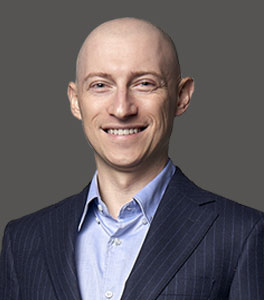

Septal perforation repair is referred to as any procedure that is aimed to close the hole temporarily or permanently. The septum separates the two sides of the nose, creating the nasal passageways. When this wall is perforated, air can flow through the hole, drying out the inside of the nose. If the hole is unable to heal on its own, a septal repair may be needed. Dr. Gary Linkov is a plastic surgeon specialized in nose plastic surgery who performs this outpatient correction at City Facial Plastics in New York City.


The nasal tissues are susceptible to damage, including the septum. The majority of the nose structure is made from cartilage and soft tissues that can be easily damaged. If an instrument punctures the septum during a procedure or accident, a hole can be left open between the nasal passages. Other causes like continuous cocaine use, fungal infections or certain medications cut off blood flow to the cartilage and lead to damage of the septum.
A septal perforation repair surgery involves a temporary or permanent surgical solution to close the hole. The hole is composed of three layers (septum in the middle and mucosal flaps on either side) that must each be repaired separately.
The nasal septum separates the two sides of the nose. It is made of cartilage, bone, and mucosa. Various conditions may predispose and cause a septal perforation, which is a hole in the septum. The hole can be big or small and may be asymptomatic or may cause certain unpleasant signs and symptoms. The decision to close a septal perforation depends on several factors and needs to be weighed against the risks of repair.
In some cases, a septum heals on its own. If the nasal passages are kept moist and protected, the hole may heal over. Unfortunately, this is often not the case. The perforation can become crusty, bleed and obstruct breathing. Many people are annoyed by a whistling sound in their nose. If the perforation does not heal, it can become larger, leading to a nasal valve collapse or a saddle nose deformity.
Perforations that are asymptomatic do not need to be closed. Bigger perforations (>3cm) and those positioned further back in the nose are more difficult to close.
Therefore, a good candidate for septal perforation has the following signs and symptoms:
There are various components of the septum, such as:
Perforations occur anywhere along the portion of the septal cartilage. The septal cartilage has a covering that provides it with blood supply, called the perichondrium. The perichondrium is surrounded by nasal mucosa on either side of the septum.
During your initial consultation, Dr. Linkov will obtain a complete medical and surgical history, including any allergies you might have and the medications that you currently take. You will also be asked about lifestyle and drug use as these are sometimes relevant to the etiology of a septal perforation. A physical examination is performed, including anterior rhinoscopy with a nasal speculum and often an endoscope to fully visualize the septum and the rest of the nasal structures on both sides.
The septal perforation is measured for size in centimeters, taking note of both the anterior-posterior and the inferior-superior dimensions. If the reason for your septal perforation cannot be established based on history and physical exam, a biopsy of the area and/or imaging might be recommended before the surgical repair is discussed. Once a surgical repair is considered, Dr. Linkov will present you with options based on the material below and a surgical plan will be devised incorporating your input and preferences.
Dr. Linkov is the next big name in plastics in NYC. He is extremely knowledgable and skillful. Whats most important, he really cares about his patients and always has their best interest. A++ highly recommend!
Jay Feldman
Many procedures have been described to repair nasal septal perforations. The most classic and reliable type of septal perforation repair is the use of septal mucosal advancement flaps inside the nose, recruiting mucosa from superior and inferior to the hole, combined with an interposition graft that takes the place of the missing cartilage. This type of repair works well for symptomatic perforations of up to 3cm.
There are two main types of approaches to septal perforation surgery, which are:
The five major steps of a nasal septal perforation repair surgery include:
In preparation for your nasal septal perforation repair surgery in UES, Manhattan, the following information is helpful:
Do not eat or drink 6 hours before your scheduled surgery. Septal perforation repair surgery is performed under general anesthesia with an anesthesiologist present. There will be no pain during the surgery and you will have no recollection of the procedure. Your time at the private operating room suite or the ambulatory surgery center will be about 6 hours, with 3-4 hours of actual surgical time.
The following information is useful to keep in mind for the septal perforation repair recovery, including:
Risks and complications of septal perforation repair surgery include:
There are patients who should not have a nasal septal perforation repair procedure, these include patients with the following:
As described above, alternatives to septal perforation surgical repair are:
The method of mucosalized flaps with an interposition graft has been described by many surgeons with more than a 90% success rate in perforations up to 3 cm in size. Dr.Linkov’s success rate also reflects these numbers. In general, the larger the hole the lower the success rate and patients need to be prepared for that. Successful closure offers patients the opportunity to enjoy improved nasal breathing and function.
Most septal perforation repair costs are covered by insurance. Keep in mind that certain surgeons are not in-network providers. Many insurance policies have out-of-network coverage which may apply. As long as the septal perforation surgery is performed in the proper ambulatory surgical center then the facility and anesthesia fees are almost always covered by in-network coverage.
Dr. Gary Linkov is a board-certified facial plastic surgeon in Midtown, Manhattan. Dr. Linkov is a busy septoplasty and rhinoplasty surgeon with extensive experience treating all conditions of the nose. He is the Chief of Otolaryngology and Facial Plastic Surgery for the Veterans Hospital in Brooklyn, NY, where he operates on complex nasal deformities, serving our country’s veterans. Dr. Linkov’s private practice in Manhattan’s Upper East Side focuses on cosmetic and functional septoplasty and rhinoplasty, as well as nasal septal perforation repair.
Correcting a septal perforation is best done in the earliest stages. Small holes are repaired at our clinic and may not require major nasal reconstruction. If the hole is allowed to become larger, the repair is more complex. Dr. Linkov, as the best-in-class plastic surgeon in New York, will perform a thorough examination and determine the best option for correcting septal perforation damage. Contact our City Facial Plastics office in Manhattan, NY to schedule a consultation to determine the right solution to repair your septal perforation.
Dr. Linkov is the next big name in plastics in NYC. He is extremely knowledgeable and skillful. What’s most important, he really cares about his patients and always has their best interests. A++ highly recommend!
Jay Feldman

Dr. Linkov is a double board-certified by the American Academy of Facial Plastic and Reconstructive Surgery and the American Board of Otolaryngology-Head & Neck Surgery. A native of New York, Dr. Linkov graduated as a salutatorian from Cornell University and received his Medical Degree at Columbia University College of Physicians and Surgeons. Dr. Linkov conducted advanced head and neck cancer research at the world-renowned Memorial Sloan Kettering Cancer Center. Dr. Linkov is a former Adjunct Assistant Professor at New York University (NYU), where he taught Rhinoplasty.
Dr. Linkov is a top-rated facial plastic surgeon in New York who specializes in lip lift, facelift, rhinoplasty, and hair transplant. He has been named one of the top 5 lip lift surgeons in the United States, is listed in the prestigious SuperDoctors New York™ registry, and has appeared on the Dr. Oz Show, where he discussed the state-of-the-art hair transplantation procedure.


City Facial Plastics 150 E 56th St, #1AB, New York, NY 10022 (212) 439-5177